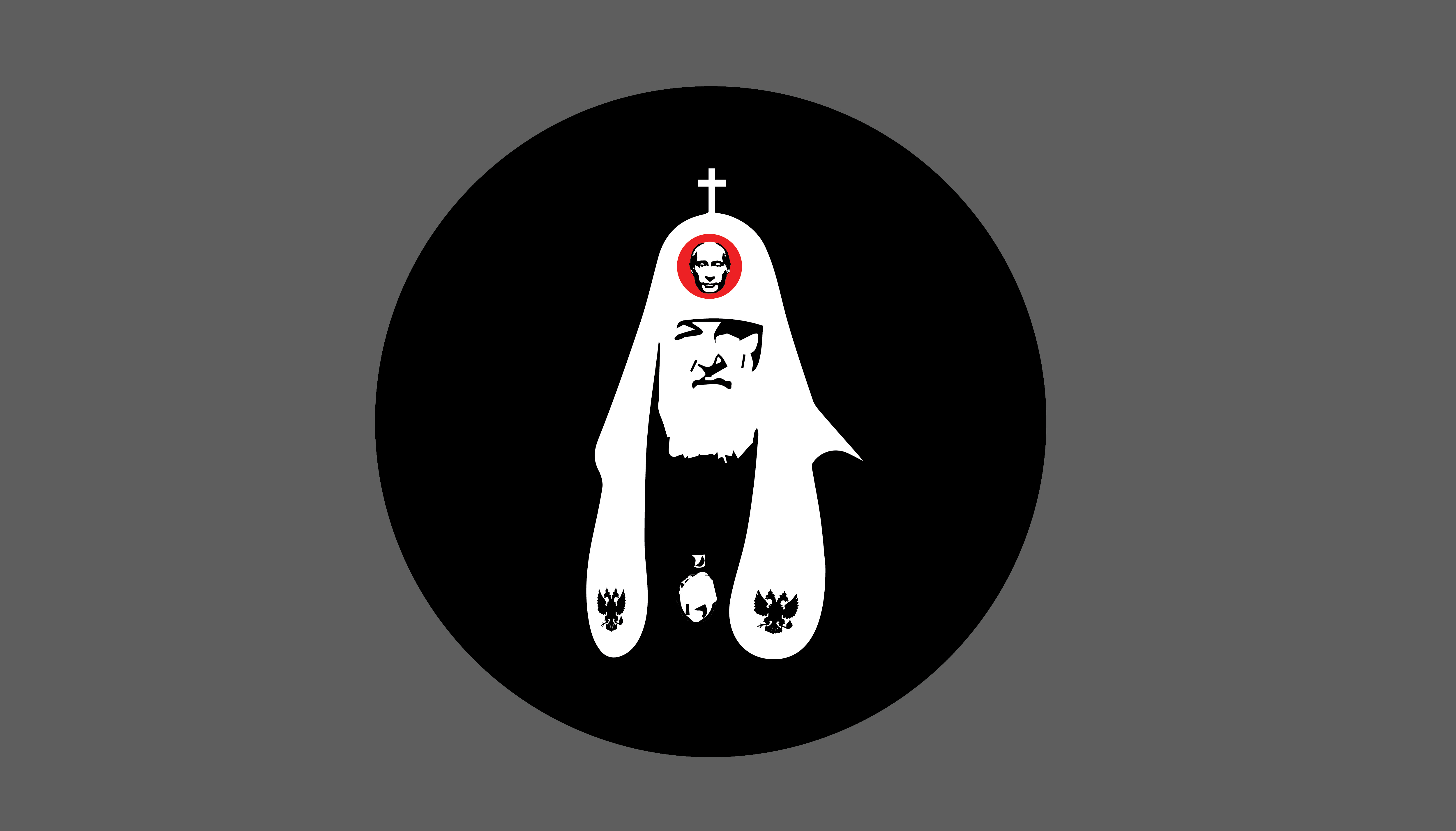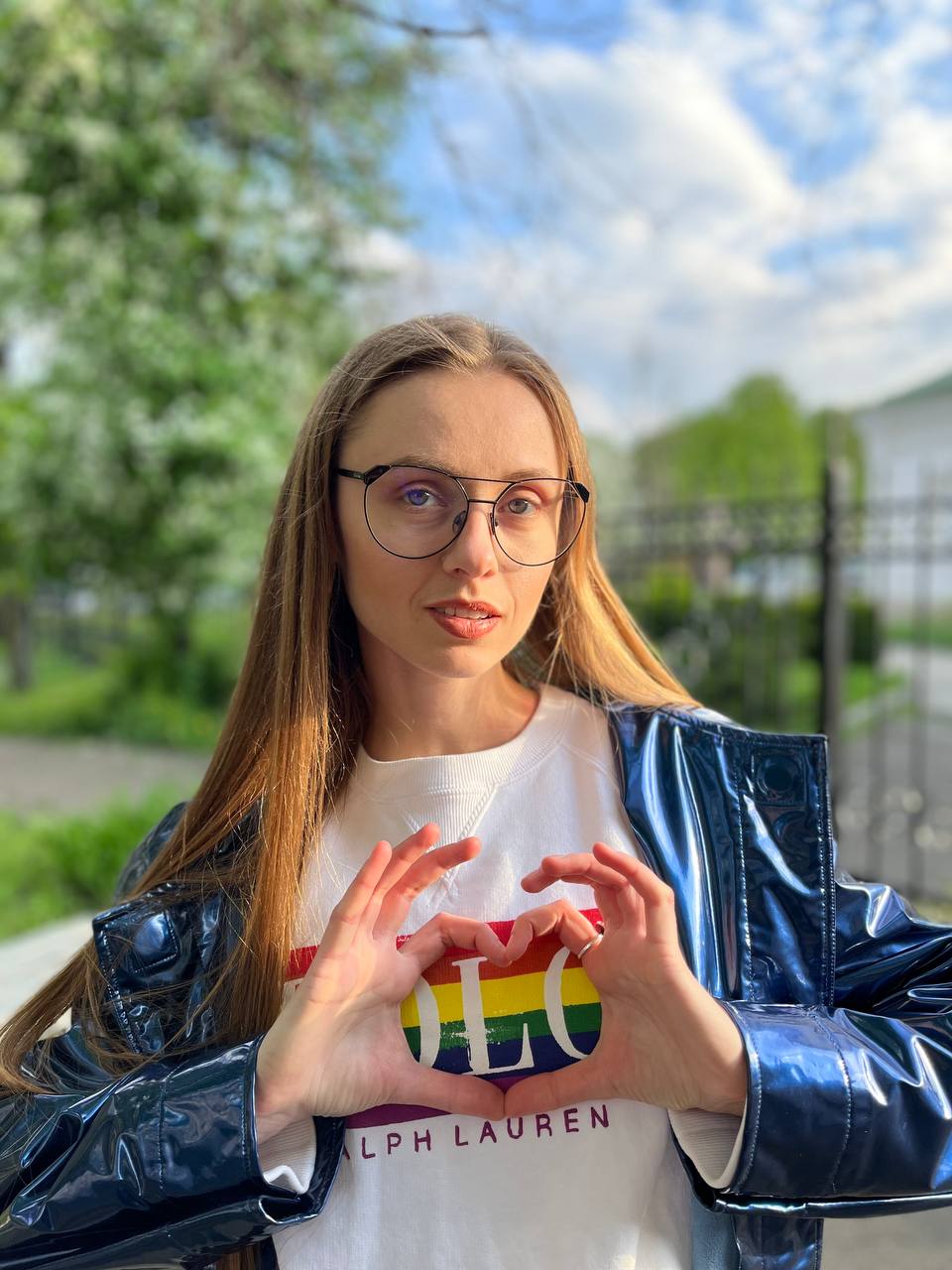Українською читайте тут.
The Russian Orthodox Church (ROC) unreservedly endorses Russia’s war on Ukraine. Actively involved in the deportation of Ukrainians from occupied territories, the ROC also raises funds to support the Russian military. Patriarch Kirill contends that a Russian soldier’s death in this war absolves him of all his sins, a sentiment enthusiastically echoed by the Ukrainian Orthodox Church, which maintains a canonical relationship with the ROC. Russian propaganda has frequently exploited religion to legitimize the Russian invasion of Ukraine.
How does propaganda employ religion — specifically Russian Orthodox Christianity — in its rhetoric? What tactics does it utilize? Why does the Russian political regime exploit religion for secular objectives? We elucidate.
Long before Russia’s invasion of Ukraine, the Kremlin wielded a perilous weapon against Ukrainians: the soft power of religion. Soft power refers to the ability to exert influence through persuasion and argumentation rather than coercion or violence. Soft power involves cultural, economic, and educational means, as well as diplomacy and various institutional support, to shape a favorable perception of the country, thus enhancing its global influence and authority. The Russian Orthodox Church serves as a form of soft power, and reinforcing its religious supremacy aligns with the Kremlin’s geopolitical ambitions.
Following Gorbachev’s reforms in the 1980s, Russia underwent considerable political and religious transformations. Russian Orthodoxy, once persecuted and virtually excluded from the public sphere during Soviet times, has gained significant influence under Putin’s administration and now occupies a prominent political role in Russian society. Prior to 2014, Putin cited the shared Orthodox religion of Ukrainians and Russians as an element of a narrative supporting Ukraine’s geopolitical integration with Russia. Propaganda capitalizes on the theme of religion, relying on the traditional culture-language-faith triad to demonstrate the “unity” of Russians, Ukrainians, and Belarusians.
Putin advanced the Russian Orthodox Church and its values as a means of protecting Russian society and civilization from the “decadent West”. However, the true motive was to consolidate his authoritarian regime. This mirrored Tsar Nicholas I’s imperial trinity of Orthodoxy, Autocracy, and Nationality. Shortly after Crimea’s illegal annexation, Putin stressed that St. Volodymyr, Prince of Kyivan Rus (980-1015), was baptized on the peninsula “in an Orthodox ceremony that established the common foundation of culture, civilization, and human values”, purportedly uniting the peoples of Russia, Ukraine, and Belarus. Putin’s soft power transformed shared religious origins and the Baptism of Rus into a propaganda argument asserting that Kyiv and Moscow possess a common religion, values, and identity.
Although the Russian constitution formally separates church and state, in reality, the ROC is a significant political player controlled by the ruling party and Putin himself. Patriarch Kirill, the head of the Russian Orthodox Church, frequently meets with Russian officials (including Putin), communicates “Russian world” propaganda messages, and fosters a positive attitude towards the Kremlin’s actions. For instance, in 2009, Moscow Patriarch Kirill (Gundyaev) declared that only the “Russian world” (a cornerstone of Russian propaganda) could become a powerful global international political actor and that it surpasses any political alliances. The Orthodox Church bolsters Russia’s power and position against the West, particularly in the ongoing war. Patriarch Kirill of Moscow has sanctified Russia’s war against Ukraine, denouncing the “forces of evil” that divide the Slavic peoples and any “capitulation or weakness” in the fight against Western “values” in the war against Ukraine.
A certain group of Ukrainian clergy and politicians consistently cooperated with the Russian propaganda machine. Take, for example, the notorious “Pasha Mercedes”, Metropolitan of the Ukrainian Orthodox Church, who described Russia’s large-scale invasion as “a war between America and Russia to the last Ukrainian”. He celebrated the occupation of Kherson and parroted Russian propaganda, claiming that Russian troops “struck those American laboratories in Kyiv and Odesa with such force that they made the dust fly.”. A year before the all-out invasion, “Pasha Mercedes” appeared in an Orthodox TV series produced by Oksana Marchenko, the wife of Viktor Medvechuk. We delved into the problematic aspects of the Palomnytsia (Pilgrim) project here.
In May 2015, when then-President of Ukraine Petro Poroshenko urged those attending a session of the Verkhovna Rada to commemorate the war’s casualties, the entire hall rose to its feet, with the exception of three Moscow Patriarchate priests. Later, Metropolitan Onufriy explained that their refusal to stand symbolized a “protest” against the war. Lastly, let’s remember one of the Ukrainian Orthodox Church’s primary financial supporters, Vadym Novynskyi, a pro-Russian politician and traitor whom Russian propaganda whimsically labeled the “oligarch-deacon”. Additionally, several churches of the UOC declined to hold funeral services for fallen Ukrainian soldiers, and such incidents were not rare. Most recently, a priest and congregation members assaulted a soldier in a UOC church in Khmelnytskyi.
Why are these cases so dangerous, and what threats do they pose?
Russia exploits the church and religion as they serve at least five critical functions that aid Putin’s authoritarian regime in maintaining power:
1. Mass control. By advocating a specific religious doctrine, an authoritarian regime regulates the behavior of believers, suppresses dissent, and preserves social order.
2. Reinforcing the leader's authority. Propaganda, through faith or religious institutions, portrays authoritarian leaders as having a divine mandate to rule obtained from a "higher power".
3. Diverting attention from political and economic issues. By concentrating on religious matters, propaganda diverts the populace from acute "worldly" problems such as corruption, freedom of speech suppression, poverty, or inequality.
4. Extending international influence. By promoting a particular faith or supporting religious institutions in other countries, the regime gains influence and backing among other religious communities.
5. Mobilizing support for the political regime. By advocating a specific religious ideology, propaganda fosters a sense of unity and solidarity among its supporters.
Below, we examine several tactics employed by Russian propaganda.
Victim Propaganda:
This tactic involves depicting an individual or group as victims of unfair treatment, oppression, or persecution, regardless of the actual circumstances. Russian propaganda frequently portrays Ukrainian Orthodox Church (UOC) parishioners and clergy as “martyrs” subjected to religious persecution in Ukraine. According to propagandists, the conflict between the UOC and Ukrainian authorities intensified during the 2018 Tomos of autocephaly acquisition, as “Poroshenko’s church allegedly began seizing UOC churches”. Additionally, Russian propaganda claims that the Security Service of Ukraine unjustly opens criminal cases against UOC clergy and conducts searches of bishops, priests, churches, and monasteries in search of evidence of their activities against Ukraine. They are purportedly coerced into publicly denouncing Patriarch Kirill (oh, no!) and contributing to Ukraine’s victory against Russia.
This tactic aims to elicit strong emotions for the “hurt” believers (compassion, empathy) and incite anger against their “oppressors”. Propagandists often use this strategy to deflect attention from their own misdeeds and demonize their adversaries. For instance, Russian propaganda compared President Zelenskyy and his “godless” policy towards the UOC to “manifestations of the devil”.
False Interpretation
This tactic involves drawing false conclusions from genuine premises by distorting facts, making unfounded arguments, and attempting to mold them into a favorable interpretation. Employing this tactic, Russian propaganda “proves” that the Ukrainian government has systematically tried to divide the Ukrainian and Russian people: “The believers are part of one nation, as is the Orthodox Church, which is essentially the only one [meaning the only true one]”.
In reality, we encounter a repetition (not in the political sense, but in the religious) of the message about “one people” that has been artificially divided; Russians, Ukrainians, and Belarusians supposedly share common cultural and historical roots — “Ancient Rus, Old Russian language, and Orthodox faith”. Such claims devalue Ukrainian agency and sovereignty and strive to bring Kyiv back under Moscow’s control. These messages offer a false picture of the past and, consequently, impose a distorted vision of the future.
Conspiracy Theory
This tactic involves interpreting events through the lens of a secret conspiracy orchestrated by a powerful group of individuals. Propagandists warn that the current situation in Ukraine resembles a “witches’ coven and a genuine religious orgy”. Ukraine’s policy toward the UOC is allegedly dictated by the Pentagon, which deliberately aims to spread various sects, cults, and esoteric teachings of sorcerers, wizards, and psychics because these “religious entities” are easy to control. For instance, they can be coerced into committing “terrorist acts” on the Crimean Bridge or within Russian territory.
This propaganda technique aims to divert attention from the real situation, conceal the true causes and consequences of events, and propagate a conspiratorial version instead.
Discrediting
Russian propaganda seeks to discredit the UOC’s “competitors”, the Orthodox Church of Ukraine (OCU), by labeling them “schismatics” and undermining their authority in every possible way.
According to the propaganda machine, the OCU received its first official congratulations from the US State Department and the US Embassy shortly after its establishment. Concurrently, US Ambassador for International Religious Freedom Sam Brownback and US Ambassador to Greece Geoffrey Pyatt, who served as ambassador to Ukraine from 2013 to 2016, visited Mount Athos and church leaders, urging them to recognize the OCU; Ambassador Kurt Volker and Secretary of State Mike Pompeo met with Epifaniy on several occasions. Russian propagandists allege that all of this indicates the OCU was part of American policy in Ukraine. By manipulating the meanings of facts (greetings from the State Department and visits to Mount Athos), Russian propaganda attempts to devalue Ukraine’s victory once more.
This message, despite its absurd parallels, resonates with the recurring propaganda message that Ukraine supposedly imitates the West in everything and that “Western curators” make all decisions for Ukrainians — even whom to worship.
Equivocation
This tactic involves the artificial substitution of commonly used concepts, usually negative ones, with those perceived as neutral or positive. We have written about this tactic before. A prime example of equivocation is the use of a new language aimed at hiding facts, shifting emphasis, softening messages, and distracting from serious issues.
During the Eastern Rite Christmas holidays, Russia “generously” offered a ceasefire, allegedly to demonstrate Christian mercy and end the fighting. “The Ukrainians were offered the hand of Christian mercy on the Great Feast, but their leaders rejected it. I think most of our military personnel involved in the ‘SMO’ [i.e., the war against Ukraine - author] sighed with relief when they heard the refusal of the chief Ukrainian clowns to cease fire on Christmas. Fewer problems and trickery”, summarized Dmitry Medvedev, Deputy Chairman of the Russian Security Council.
Using Christmas (as well as New Year’s holidays or the harvest season) as a pretext to disorient, shelling Ukrainian military positions and residential areas even more harshly while calling for respect for the Orthodox religion, is disingenuous. The propaganda’s cynicism is underscored by the fact that, despite the “Christian values” of the Russian troops, they have destroyed or damaged half a thousand religious buildings in Ukraine.
Russian Orthodoxy and Ukrainian public opinion
The full-scale invasion has invalidated the gradual scenario of distancing from the Russian version of Orthodoxy, initiated in 2018 with the granting of autocephalous status to the Orthodox Church of Ukraine. Given the situation, Ukraine has neither the time nor reason to wait for the clergy to resolve disputes themselves: the state is compelling them to actively self-determine, and loyalty to Moscow during wartime is punishable by law.
According to the open data platform Opendatabot, since the beginning of 2023, nearly 70 churches have converted to the OCU, while another 8,500 remain in the UOC.
Ukrainian believers are increasingly repulsed by the close ties between the ROC and UOC, and the Putin regime. According to the KIIS, a year before the full-scale invasion, 18% of Ukrainian believers identified themselves as members of the UOC, and by July 2022, only 4% did. During this period, the OCU’s figures increased from 34% to 54%. Public opinion polls conducted by KIIS show that 78% of Ukrainians believe the state should intervene in the activities of the Ukrainian Orthodox Church of the Moscow Patriarchate to some extent. Among them, 54% believe that this religious institution should be entirely banned in Ukraine.



